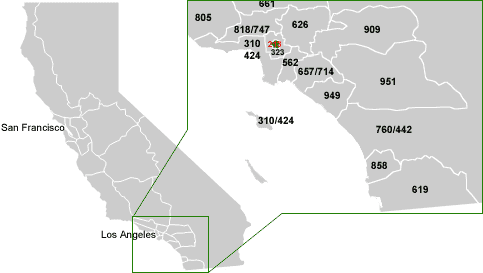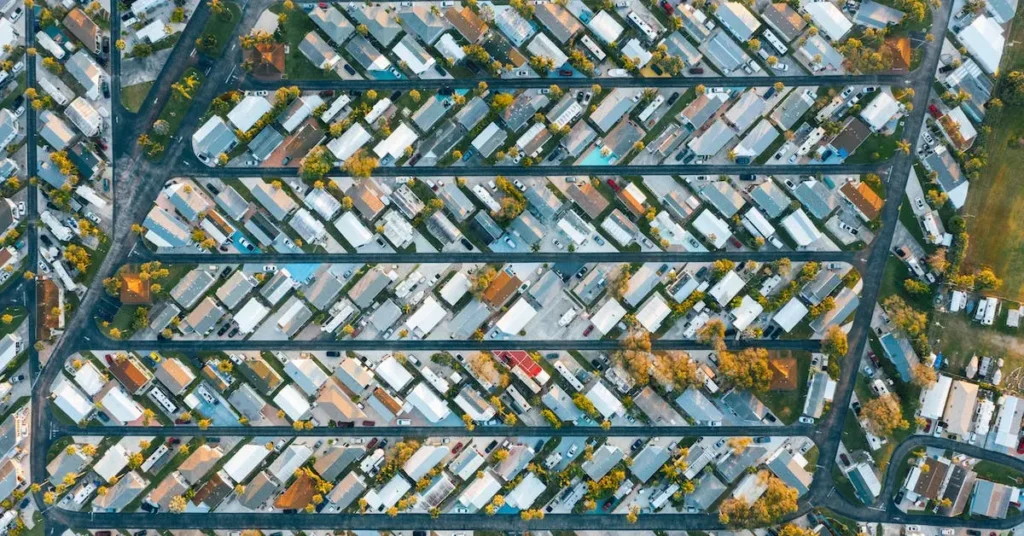213 Area Code
Area code 213 serves the region of downtown Los Angeles and certain adjacent areas in California. The state of California utilizes multiple area codes, including 209, 310, 323, 408, 415, 424, 442, 510, 530, 559, 562, 619, 626, 650, 657, 661, 669, 707, 714, 747, 760, 805, 818, 831, 858, 909, 916, 925, 949, and 951 to efficiently manage its telecommunications infrastructure.
| Time Zone: | Pacific GMT -8:00 with Daylight Saving in the Summer |
| In Service Date: | 01-Jan-47 |
When we pick up the phone to dial a number, the first few digits we enter – the area code – are more than just a functional necessity. These three-digit numbers serve as a gateway to a region’s history, culture, and identity. Area codes, initially introduced to streamline long-distance calling, have evolved into cultural symbols, representing the regions they cover. Among these, the 213 area code stands out as a particularly iconic example.
Situated in the heart of Los Angeles, California, the 213 area code is not only one of the original area codes established in North America but also a symbol of the vibrant, diverse, and dynamic nature of the city it serves. Its mere mention conjures images of Hollywood’s glitz, the hustle of downtown LA, and the rich tapestry of cultural and economic activities that define this bustling metropolis.
As one of the first area codes introduced in 1947 during the inception of the North American Numbering Plan, it carries with it a sense of history and legacy. This blog post delves into the fascinating journey of the 213 area code, exploring its origins, evolution, and the unique place it holds in the annals of American telecommunications and popular culture.
What Area Code is 213?
Los Angeles
Los Angeles is situated within the Pacific time zone, commonly referred to as America/Los_Angeles. The 213 area code, originally established in 1947, stands as one of the inaugural 86 area codes established by AT&T and Bell. Its initial jurisdiction encompassed Southern California, which included the city of Los Angeles.
Where is 213 Area Code?
Los Angeles
This map illustrates the extent of coverage for the 213 area code, with the designated coverage area highlighted in green.

History of the 213 Area Code
The story of the 213 area code, a fundamental part of Los Angeles’ identity, began in the post-World War II era. Established in 1947, it was among the first set of area codes introduced under the North American Numbering Plan (NANP), a revolutionary system designed to simplify and standardize long-distance calling across the United States and Canada. The birth of the 213 area code marks a pivotal moment in telecommunications history, reflecting a period of rapid technological advancement and increasing connectivity.
Originally, the 213 area code covered a vast expanse of Southern California, stretching beyond the borders of Los Angeles to encompass regions that would later receive their own distinct codes. This extensive coverage area highlights the growth and potential that telecommunication experts foresaw in the region.
To understand the significance of the 213 area code, it’s essential to consider the broader history of area codes in the United States. Prior to the NANP, telephone calling was operator-assisted, with long-distance calls requiring a manual patch-through, an inefficient and time-consuming process. The introduction of area codes streamlined this, allowing for direct dialing of long-distance calls and paving the way for an era of unprecedented telecommunication growth.
The 213 area code, therefore, is not just a collection of digits dialed to reach Los Angeles; it’s a historical landmark in the evolution of American telecommunication. It represents the dawn of a new era in which distance and time zones became mere footnotes in the face of technological advancement, forever changing how we connect with one another.
Geographic Significance
The 213 area code, a beacon of urban diversity and cultural richness, currently encapsulates the core of Los Angeles, California. This area, pulsating with life and activity, forms the heart of one of the world’s most famous cities. The geographical boundaries of the 213 area code take you through a journey across some of Los Angeles’s most iconic and historic neighborhoods, including Downtown LA, Chinatown, and Koreatown.
Downtown Los Angeles, ensconced within the 213 area, stands as a vibrant center of commerce and entertainment. It’s home to the towering skyscrapers of the Financial District, the cutting-edge art in the Arts District, and the historic architecture of the Broadway Theater District. This area code also embraces the Staples Center, a hub for sports and concerts, and the Los Angeles Convention Center, a focal point for major conventions and trade shows.
Venture further into the 213 zone, and you’ll find Chinatown, a bustling neighborhood rich in Chinese-American history, and Koreatown, known for its unique blend of Korean and Latino cultures. These neighborhoods, each with their unique character and charm, contribute to the area’s reputation as a melting pot of cultures and traditions.
The cultural and economic significance of the 213 area code extends far beyond its geographical borders. It’s a symbol of Los Angeles’s role as a global city, a center for international trade, entertainment, fashion, and technology. The influence of Hollywood, also part of the greater Los Angeles area, adds to this region’s global prominence, making the 213 area code synonymous with creativity and innovation.
As a hub for major businesses and creative industries, the 213 area is not just a crossroads of different cultures, but also a driving force in the American economy. It’s a place where trends are set, ideas are born, and the future of commerce and culture is shaped. This area code, therefore, represents not just a geographic location, but a dynamic and influential force in both California and the United States.
Socio-Cultural Impact
The 213 area code transcends its role as a telecommunication identifier, emerging as a cultural icon deeply ingrained in media and entertainment. This set of digits has become a symbol of prestige and recognition, synonymous with the allure and glamor of Los Angeles. Its frequent appearances in various facets of pop culture have cemented its status as more than just an area code; it’s a representation of a lifestyle, a dream, and a vast network of creative and cultural dynamism.
In the realm of entertainment, the 213 area code has been immortalized in numerous movies, songs, and television shows. It often appears as a subtle nod to the heart of Los Angeles in blockbuster films and popular music, symbolizing the essence of the city. From lyrics in hip-hop tracks that pay homage to the streets of LA to its mention in films that capture the city’s vibrant energy, the 213 area code has become a familiar and evocative motif.
Pop culture references to the 213 area code abound, with its mention often serving as a shorthand for the cultural richness and diversity of Los Angeles. It’s not uncommon to hear the area code referenced in dialogue or see it in the background of scenes, adding authenticity and a sense of place to creative works.
The perception and identity associated with being a resident within the 213 area code are deeply rooted in pride and a sense of belonging. To claim the 213 as one’s own is to be part of the narrative of Los Angeles, a city of dreams, aspirations, and relentless energy. Residents of the 213 area often identify strongly with the area’s cultural and historical significance, seeing themselves as part of a larger story that encompasses the glamour of Hollywood, the grit and resilience of downtown LA, and the myriad stories of success and struggle that define the city.
In essence, the 213 area code is more than just a telecommunication necessity; it’s a badge of honor, a marker of identity, and a symbol of the vibrant, unyielding spirit of one of the world’s most dynamic cities.
Technological and Communication Evolution
The evolution of telecommunications has been a journey of innovation and transformation, deeply affecting how we perceive and use area codes, including the iconic 213. From the era of rotary phones to the advent of smartphones and the internet, each technological leap has reshaped our relationship with these three-digit identifiers.
Initially, area codes like 213 were integral to the process of making a call. They were a necessary part of reaching out across cities and states, a concept born from the need to organize and simplify long-distance calling. The 213 area code, in particular, became a familiar sequence for anyone dialing into the heart of Los Angeles, linking callers to this bustling hub of activity.
However, the introduction of cell phones dramatically altered this landscape. Mobile phones brought with them a sense of individual identity tied to one’s phone number, rather than a geographic location. As cell phones became ubiquitous, the importance of an area code as a geographic marker began to wane. People moved across cities and states, often retaining their original cell phone numbers. Thus, a New Yorker could move to Los Angeles and still carry a number with a non-213 area code, blurring the lines of geographical identity.
The advent of the internet further revolutionized telecommunications, introducing new ways of communication that often bypassed traditional phone lines. With the rise of email, social media, and various messaging apps, the act of dialing a number became just one of many ways to connect. This shift led to a change in how we perceive area codes. They transformed from being a daily necessity in communication to a more symbolic role, especially for historic and culturally rich codes like 213.
Today, the 213 area code holds more of a cultural significance than a practical one, especially in an age where dialing a number is just one of many ways we connect. It stands as a testament to the history and evolution of communication technology, symbolizing not just a region, but a rich tapestry of cultural and historical identity.
Changes and Splitting of the Area Code
The history of the 213 area code is a narrative of change and adaptation, mirroring the rapid growth and urban expansion of Los Angeles. Over the years, the 213 area code has undergone several splits and overlays, a testament to the burgeoning population and the escalating demand for more telephone numbers.
Initially, the 213 area code encompassed a vast area, covering almost all of Southern California. As the population surged and the need for more telephone numbers grew, the first major split occurred in 1951, creating the 714 area code to serve Orange County and parts of Los Angeles County. This split marked the beginning of an era of transformations for the 213 code.
Further splits followed as the region continued to grow. In 1984, the San Fernando and San Gabriel valleys were assigned the 818 area code, significantly reducing the coverage of 213. This trend continued with the creation of the 310 area code in 1991, which took over the Westside and coastal communities, further shrinking the geographical reach of the 213 area code.
The most recent and significant change came with the introduction of the overlay plan. Recognizing the need to accommodate an ever-increasing number of phone users without disrupting existing numbers, the 323 area code was overlaid onto the same geographical region as the 213 area code in 1998. This overlay allowed for the coexistence of both area codes within the same geographic area, effectively doubling the availability of phone numbers.
Today, the 213 area code, in tandem with the 323 overlay, continues to serve the central portion of Los Angeles, including Downtown, Koreatown, and parts of Westlake. Its coexistence with the 323 area code is a reflection of Los Angeles’s dense population and the ever-evolving landscape of telecommunication needs. Despite the changes and overlays, the 213 area code retains its historical and cultural significance, remaining a powerful symbol of the heart of Los Angeles.
Challenges and Future Outlook
The 213 area code, while steeped in history and cultural significance, faces contemporary challenges, primarily the saturation of numbers. As one of the most densely populated and commercially active areas in the United States, the central part of Los Angeles has an ever-growing demand for new phone numbers.
This demand strains the capacity of both the 213 and its overlay, the 323 area code, leading to a scarcity of available numbers. For residents and businesses, this means navigating a landscape where obtaining a new number with the coveted 213 code can be challenging, often necessitating acceptance of a number with the overlay code instead.
This saturation also reflects a broader challenge in telecommunication – the balancing act between maintaining traditional practices, like area codes, and embracing technological advancements. In a digital era, where communication increasingly relies on the internet and mobile networks, the role of area codes is shifting. They are becoming less about geographic location and more about identity and heritage.
Looking to the future, the relevance of area codes, including 213, in an increasingly digital world is an intriguing prospect. With the advent of technologies like VoIP (Voice over Internet Protocol) and the growing trend of non-geographic phone numbers, the physical location indicated by an area code becomes less critical in practical terms.
However, for area codes with significant cultural and historical weight like 213, their role may evolve rather than diminish. The 213 area code could transition from a functional necessity to a cultural and digital identifier, a symbol of one’s connection to the history and ethos of central Los Angeles.
In this context, the future of the 213 area code, and area codes in general, may lie in their symbolic value. As we move towards more advanced forms of communication, these numbers could serve as reminders of our past, markers of identity, and badges of heritage in the digital age. For the 213 area code, this might mean continuing to represent the heart of Los Angeles, not just in the realm of telecommunication, but in the broader narrative of the city’s rich and dynamic history.
Conclusion
In this exploration of the 213 area code, we have journeyed through its rich history, cultural significance, and evolving role in the tapestry of American telecommunications. From its inception in 1947 as one of the original North American area codes, the 213 has stood as a beacon of the burgeoning growth and cultural diversity of Los Angeles. It has witnessed significant changes, adapting to the city’s expanding boundaries through splits and overlays, notably with the 323 area code, to meet the soaring demand for phone numbers.
The 213 area code’s journey is not just about numbers and geography; it’s a narrative that intertwines with the socio-cultural fabric of Los Angeles. It has become a cultural icon, immortalized in media and entertainment, symbolizing the essence of downtown LA’s vibrant lifestyle. Its mention in films, music, and popular culture transcends its function as a telecommunication tool, embedding it deeply in the identity and pride of its residents.
As we look at the challenges it faces, notably the saturation of numbers, and speculate on its future in a digital world, it’s clear that the 213 area code’s significance may evolve but will not diminish. The advent of new technologies and communication methods might change how we use area codes, but for 213, its legacy and symbolism as a representation of the heart of Los Angeles will continue to resonate.
The story of the 213 area code is more than the history of a telecommunications tool; it’s a reflection of the dynamic evolution of Los Angeles itself. Its iconic status in American culture and communication stands as a testament to the city’s ongoing narrative – a story of growth, diversity, and an enduring sense of identity. As we move further into the digital age, the 213 area code will likely remain a cherished emblem of Los Angeles’ rich heritage and a symbol of its inhabitants’ connection to this ever-changing, vibrant city.


